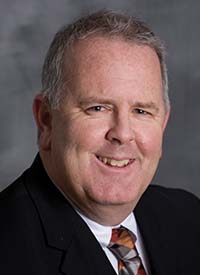 John Shevlin, Pare Corporation
John Shevlin, Pare CorporationDevelopers typically look at heavily-traveled roadways from which to draw customers when planning new retail buildings. It certainly makes sense to look for properties in heavily-traveled areas, as the existing base traffic flow will be needed to attract customers for a successful business. After researching census/demographics data to determine a sustainable pool of customers within a prescribed drive-time radius, a next critical task should be hiring a traffic professional to research and collect traffic data in the surrounding area. However, due to the expected increase in traffic that may occur from a new development, traffic engineers have the sometimes daunting task of convincing city/town planners, planning board members, and the general public that the development will not have a negative impact on the capacity and safety of the surrounding roadway network.
Traffic engineers commonly hear statements at planning or zoning board hearings such as “There is too much traffic in this area, and this development is going to create gridlock,” or “That intersection is already unsafe and the increase in traffic is going to create more crashes and safety issues,” or “I will never be able to pull out of my street.” Sometimes the comments are decidedly R-rated and unfit to be repeated here! Addressing these issues and satisfying the public is never an easy task. That’s why you need an experienced traffic engineer on your team.
So, how does a traffic engineer steer a project through the town review process and deal with public opinion? One of the most important steps is to perform a thorough traffic study that will help all parties understand the existing conditions of the surrounding roadway system and the projected demands to be placed on it by the newly proposed development. There is no doubt that new development will generate traffic and it may, depending on the development, generate enough traffic to create congestion requiring capital investment into the transportation network, typically borne by the developer. Minimizing those costs requires good traffic data and analysis.
A good traffic impact study provides a detailed description of existing conditions, including geometric conditions at intersections, existing safety issues, and existing traffic capacity issues. The project scope for the study should be very specific. This should start by identifying the exact limits which the city/town planner desires to have included in the study and for which peak periods (morning and afternoon peak hours, weekends) traffic counts are desired. The existing conditions of the project area should be clearly identified and described, including number of travel lanes, width of lanes, shoulder widths, signage and striping conditions, traffic control devices, parking, crosswalks, and utility locations. In addition to this information, a traffic counting program should be performed to gain a clear understanding of the volumes and classifications of vehicles on the roadway(s) and the “turning movements” at significant intersections.
Through the forecasting of additional traffic associated with new development, the engineer can identify required improvements/mitigation. To determine future conditions, it is important that trip generation rates for the development are obtained from proper sources, either through the ITE Trip Generation Manual or through a similar and comparable source. Knowing the uses of the proposed development and knowing how much traffic may already be considered in the existing traffic stream (pass-by trips) are critical to ensure that the projections for new trips are not exaggerated. Exaggerated trip projections would needlessly trigger costly mitigation methods for the developer. Depending on the projected increase in traffic, mitigation may range from simple striping and signage improvements to the more expensive installation of new intersection geometries or even new traffic signal systems. Sidewalks and/or crosswalks could be used to improve pedestrian access. The traffic impact study and the recommended mitigation methods will provide the review agencies with adequate information to assess the impacts to the roadway network and justify that the proposed land use is acceptable.
Every development project has its own unique challenges in regards to traffic. Pare’s traffic engineers have the knowledge of traffic control regulations, extensive retail development experience, and the respect of city, town, state and federal regulatory agencies to meet those challenges and obtain your retail project’s critical traffic approvals.
John Shevlin, P.E., is senior vice president and manager of Pare Corporation’s transportation division, Lincoln, RI.








